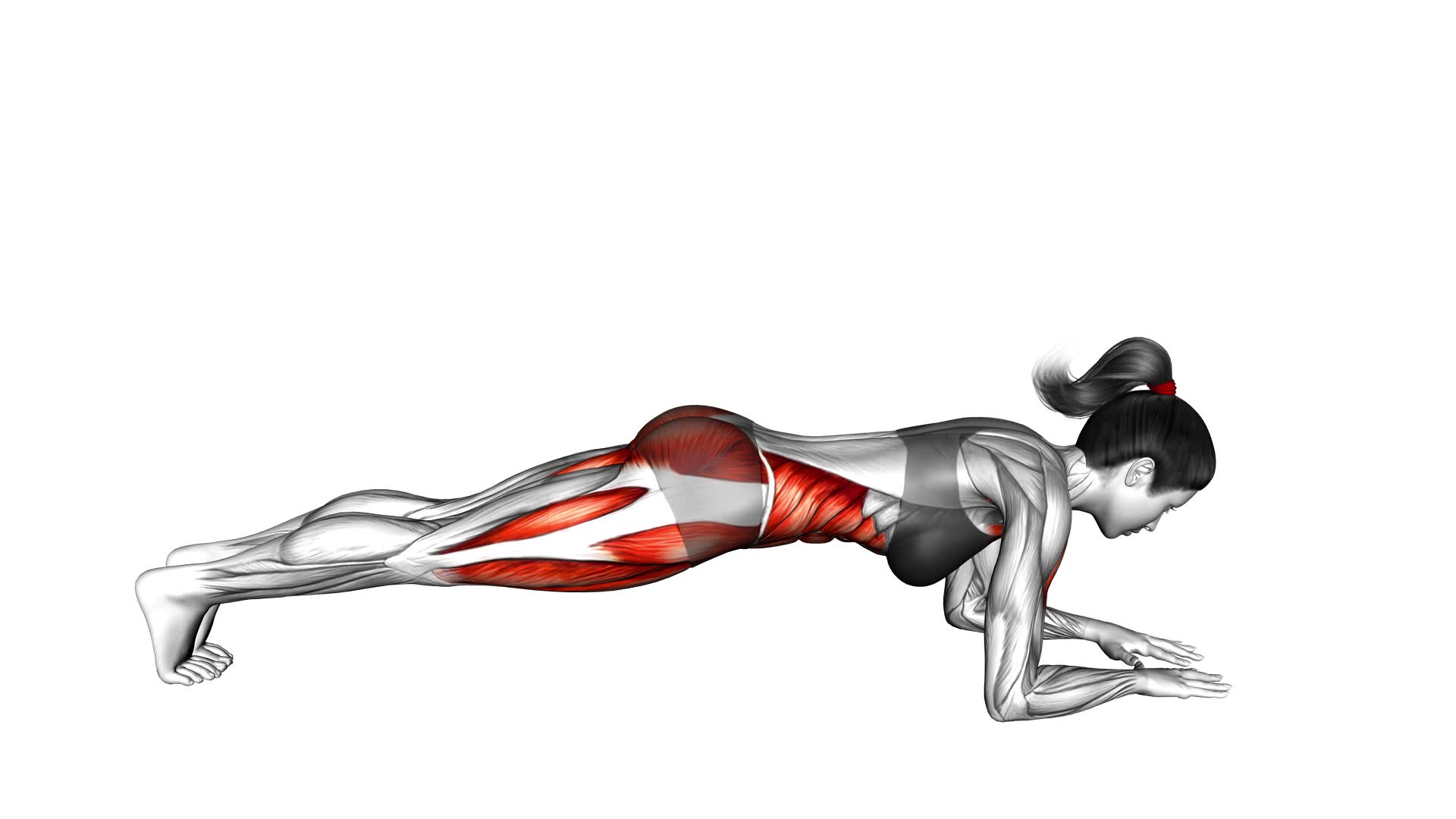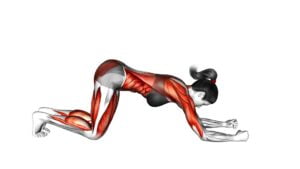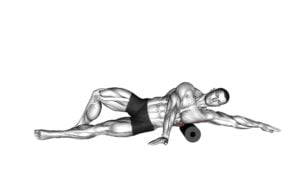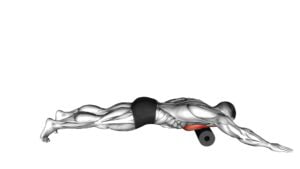Rolling Bridge (female) – Video Exercise Guide & Tips

Are you looking for an effective exercise to strengthen your core and improve flexibility? Look no further than the Rolling Bridge!
Watch This Exercise Video
In this video exercise guide, we'll show you the proper form and technique, modifications for different fitness levels, common mistakes to avoid, and tips for progression and variation.
Get ready to feel the burn and achieve your fitness goals with the Rolling Bridge exercise. Let's get rolling!
Key Takeaways
- The rolling bridge exercise strengthens and tones glute muscles, improves hip stability, enhances overall core strength, and increases flexibility.
- Proper form and technique include maintaining a neutral spine, avoiding excessive arching or rounding of the back, and focusing on using core muscles to control the movement.
- Beginners should start with the basic version of the exercise, while advanced modifications include using an unstable surface or adding resistance.
- Common mistakes to avoid include raising the hips too high, allowing the knees to cave in, rushing through the movement, and neglecting proper form and technique.
Benefits of the Rolling Bridge Exercise
Get stronger and more flexible with the rolling bridge exercise by engaging your core and glute muscles. The rolling bridge primarily targets the gluteus maximus, which is the largest muscle in your buttocks. This exercise also activates the core muscles, including the transverse abdominis and rectus abdominis, to stabilize your body during the movement. By incorporating the rolling bridge into your workout routine, you can strengthen and tone your glutes, improve hip stability, and enhance overall core strength.
To incorporate the rolling bridge into your routine, start by lying on your back with your knees bent and feet flat on the ground. Place your arms by your sides, palms facing down. Engage your core and squeeze your glutes as you lift your hips off the ground, creating a straight line from your knees to your shoulders. Hold this position for a few seconds, then slowly lower your hips back down. Repeat for the desired number of repetitions.
Now that you know the muscles targeted and how to incorporate the rolling bridge into your routine, let's move on to proper form and technique.
Proper Form and Technique
To ensure proper form and technique for the rolling bridge exercise, it's important that you maintain a neutral spine throughout the movement. This means keeping your back straight and avoiding any excessive arching or rounding. By doing so, you not only protect your spine but also engage the proper muscles for the exercise.
The rolling bridge exercise is a great way to improve stability and target your core muscles. To perform it correctly, start by lying on your back with your knees bent and feet flat on the floor. Place your arms by your sides for support. Next, engage your core and lift your hips off the ground, rolling onto your shoulders. Hold this position for a few seconds before lowering your hips back down to the starting position.
Throughout the exercise, be mindful of your form. Keep your abs engaged and your glutes squeezed to maintain stability. Avoid overarching your back or letting your hips sag. Focus on using your core muscles to control the movement.
By maintaining proper form and technique, you can maximize the benefits of the rolling bridge exercise.
Now, let's explore modifications for different fitness levels to help you progress in your fitness journey.
Modifications for Different Fitness Levels
As you progress in your fitness journey, you can modify the rolling bridge exercise to accommodate different fitness levels. For beginners, it's important to start with the basic version of the exercise to build strength and stability. To do this, begin by lying flat on your back with your knees bent and feet flat on the floor. Place your arms by your sides, palms facing down. Engage your core and lift your hips off the ground, pushing through your heels. Hold this position for a few seconds before lowering your hips back down. Repeat this movement for the desired number of repetitions.
For those at an advanced fitness level, there are several modifications that can be made to increase the challenge of the rolling bridge exercise. One option is to perform the exercise on an unstable surface, such as a Bosu ball or a stability ball. This will engage your core and stability muscles even more.
Another advanced modification is to add a resistance band around your thighs or hold a weight on your hips while performing the exercise. These modifications will increase the intensity and difficulty of the exercise, helping to further strengthen your glutes, hamstrings, and core muscles.
Remember to always listen to your body and choose modifications that are appropriate for your fitness level.
Common Mistakes to Avoid
Avoiding common mistakes is crucial when performing the rolling bridge exercise. To ensure you're getting the most out of this exercise and reducing the risk of injury, it's important to maintain proper form. Here are some common mistakes to avoid:
- Raising your hips too high: When performing the rolling bridge, it's important to lift your hips off the ground, but be mindful not to lift them too high. This can put unnecessary strain on your lower back and may lead to injury.
- Allowing your knees to cave in: Keep your knees in line with your hips and ankles throughout the exercise. Allowing your knees to cave in can put stress on your knees and compromise the effectiveness of the exercise.
- Rushing through the movement: Take your time with each repetition of the rolling bridge. Rushing through the movement can result in poor form and reduce the benefits of the exercise. Focus on engaging your core and maintaining stability throughout the entire range of motion.
Tips for Progression and Variation
To continue progressing and varying your rolling bridge exercise, there are several tips you can follow. Incorporating progression techniques and variation ideas into your routine won't only keep you motivated but also challenge your muscles in new ways.
One effective progression technique is to increase the duration of the exercise. Start by holding the rolling bridge for 10 seconds, then gradually work your way up to 30 seconds or more. This will help build endurance and strength in your core and glutes.
Another way to progress the rolling bridge is by adding resistance. You can do this by placing a resistance band around your thighs or holding a weight plate on your hips. The added resistance will intensify the exercise and make it more challenging.
To add variation to your rolling bridge, you can try performing it on an unstable surface, such as a stability ball or a BOSU ball. This will engage your stabilizer muscles and enhance your balance and coordination.
Additionally, you can experiment with different leg positions. For example, you can try extending one leg in the air while performing the rolling bridge, or you can alternate lifting each leg. These variations will target different muscle groups and add variety to your workout.
Frequently Asked Questions
How Many Calories Does the Rolling Bridge Exercise Burn?
The rolling bridge exercise is a great way to improve overall fitness. It can help you burn calories and strengthen your core muscles.
The exact number of calories burned during this exercise varies depending on factors such as your weight and intensity level. However, incorporating the rolling bridge into your workout routine can contribute to weight loss and increase your overall calorie burn.
Beginners can modify the exercise by starting with a smaller range of motion and gradually increasing as they build strength.
Can the Rolling Bridge Exercise Help to Improve Posture?
The rolling bridge exercise can definitely help improve your posture. By engaging your core muscles and strengthening your back and shoulders, it promotes proper spinal alignment and reduces the risk of slouching.
Additionally, the rolling bridge benefits include improved balance and stability. There are also variations of the rolling bridge that you can try, such as the single-leg rolling bridge or the side-lying rolling bridge, to target different muscle groups and add variety to your workout routine.
Is the Rolling Bridge Exercise Suitable for Individuals With Back Pain?
The rolling bridge exercise can be beneficial for individuals with back pain. It helps to strengthen the core muscles and improve spinal mobility.
However, it's important to modify the exercise based on your comfort level and any limitations you may have. If the rolling bridge is too challenging, you can try alternative exercises such as pelvic tilts or gentle bridges.
Always listen to your body and consult with a healthcare professional if you have any concerns.
How Often Should the Rolling Bridge Exercise Be Performed for Optimal Results?
To get optimal results from the rolling bridge exercise, it's important to perform it regularly.
Incorporating rolling bridge variations into your routine can help target different muscle groups and enhance the benefits.
By engaging your core, glutes, and hamstrings, this exercise can improve stability, flexibility, and overall strength.
Make sure to listen to your body and start with a frequency that feels comfortable.
Gradually increase the number of times you perform the rolling bridge for optimal results.
Are There Any Specific Breathing Techniques to Follow During the Rolling Bridge Exercise?
During the rolling bridge exercise, it's important to focus on your breathing patterns.
By inhaling deeply through your nose, you can fill your lungs with oxygen and prepare your body for the movement.
As you exhale through your mouth, engage your core muscles and lift your hips off the ground.
Remember to breathe continuously throughout the exercise to maintain control and stability.
If needed, you can also modify the exercise by using a yoga block or support under your pelvis.
Conclusion
In conclusion, the rolling bridge exercise is a beneficial and effective way to strengthen and tone your core muscles.
By maintaining proper form and technique, you can avoid common mistakes and optimize your results.
Remember to modify the exercise based on your fitness level and progress gradually for continued improvement.
With consistency and variation, you can enhance your overall fitness and achieve your goals.
Stay active and enjoy the benefits of the rolling bridge exercise.

Author
Years ago, the spark of my life’s passion ignited in my mind the moment I stepped into the local gym for the first time. The inaugural bead of perspiration, the initial endeavor, the very first surge of endorphins, and a sense of pride that washed over me post-workout marked the beginning of my deep-seated interest in strength sports, fitness, and sports nutrition. This very curiosity blossomed rapidly into a profound fascination, propelling me to earn a Master’s degree in Physical Education from the Academy of Physical Education in Krakow, followed by a Sports Manager diploma from the Jagiellonian University. My journey of growth led me to gain more specialized qualifications, such as being a certified personal trainer with a focus on sports dietetics, a lifeguard, and an instructor for wellness and corrective gymnastics. Theoretical knowledge paired seamlessly with practical experience, reinforcing my belief that the transformation of individuals under my guidance was also a reflection of my personal growth. This belief holds true even today. Each day, I strive to push the boundaries and explore new realms. These realms gently elevate me to greater heights. The unique combination of passion for my field and the continuous quest for growth fuels my drive to break new ground.







